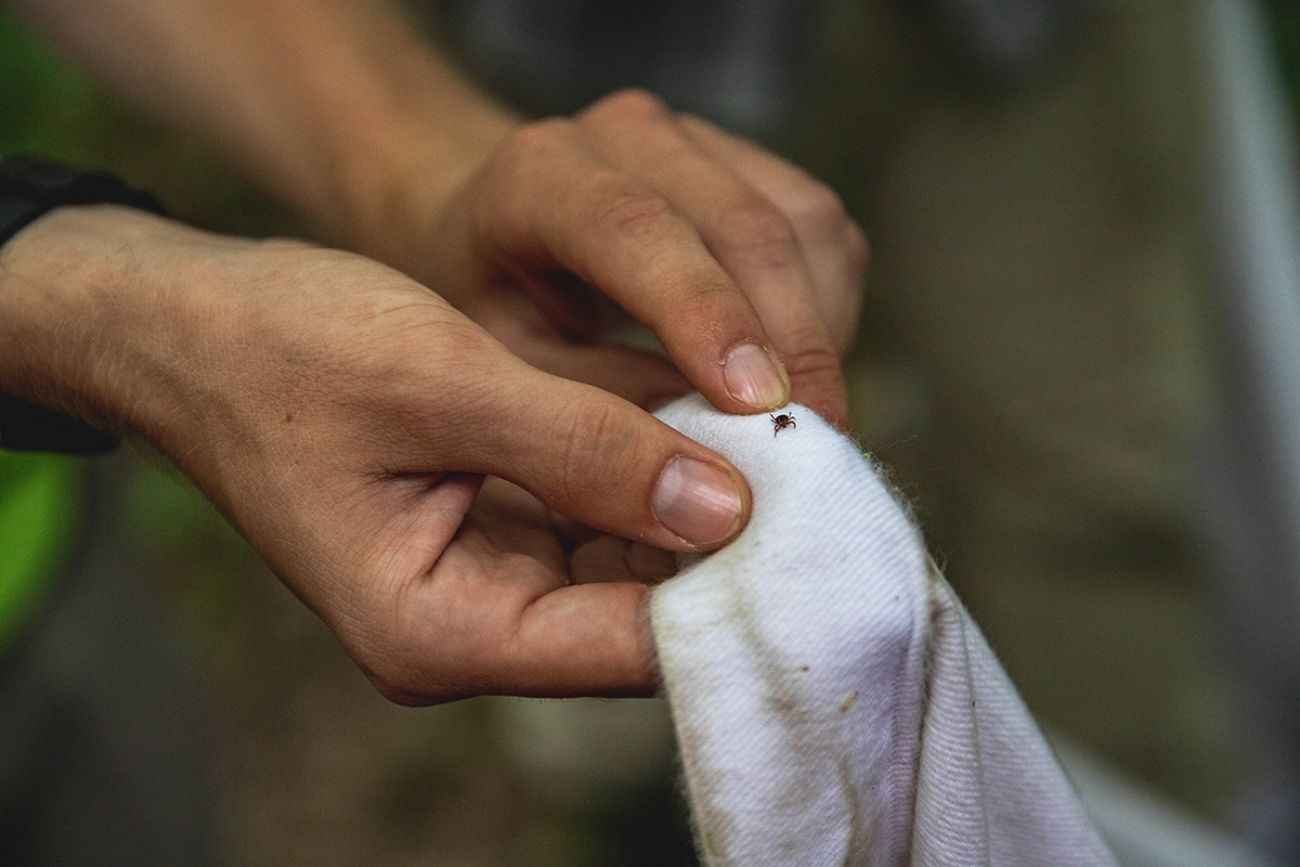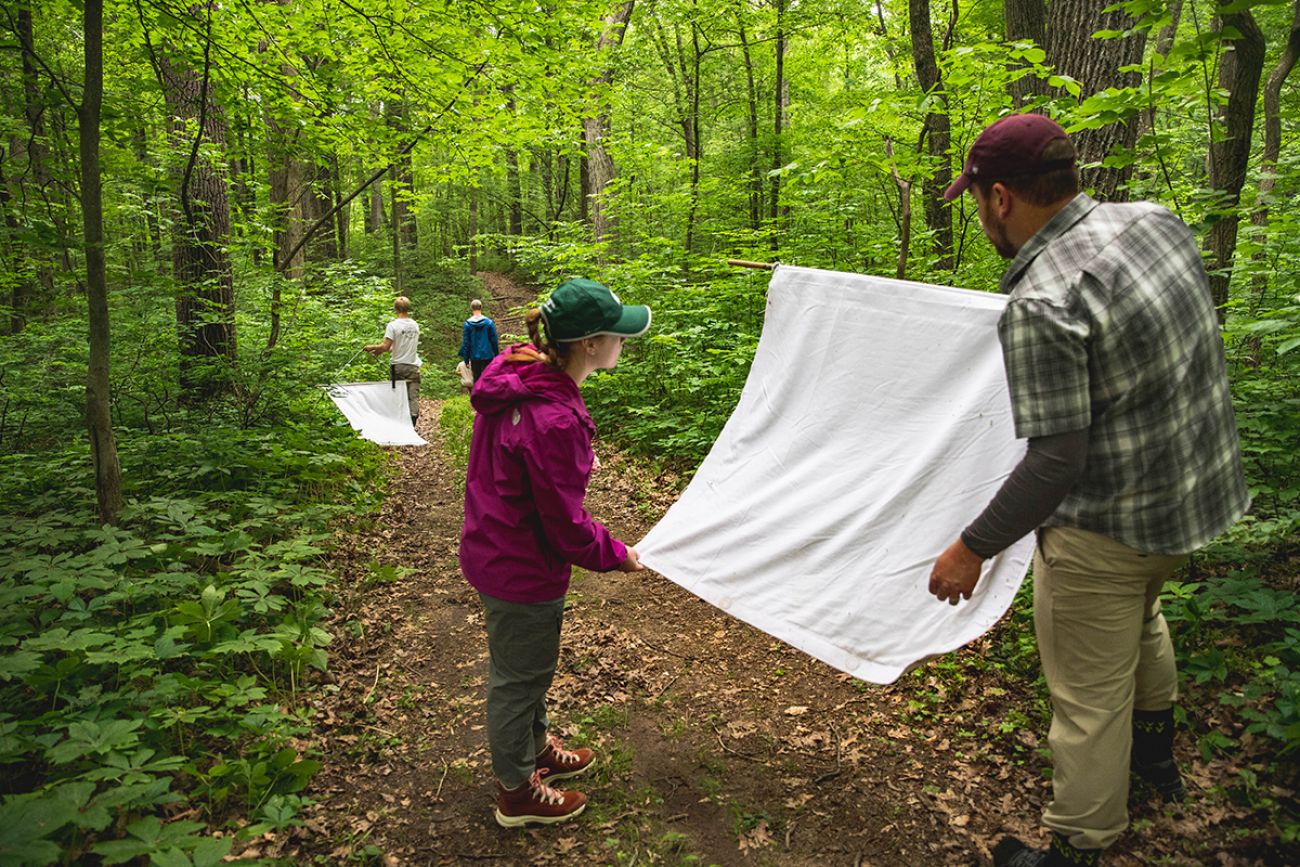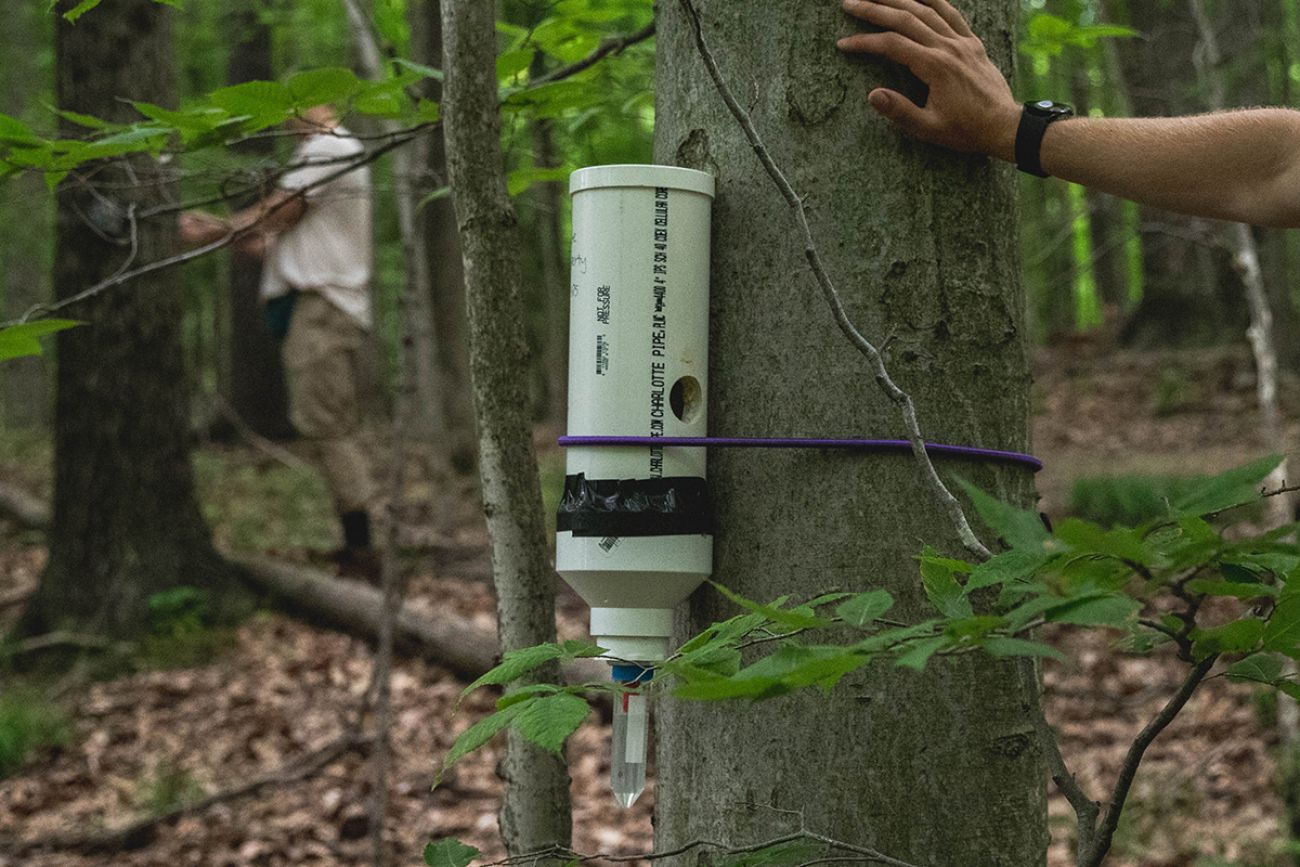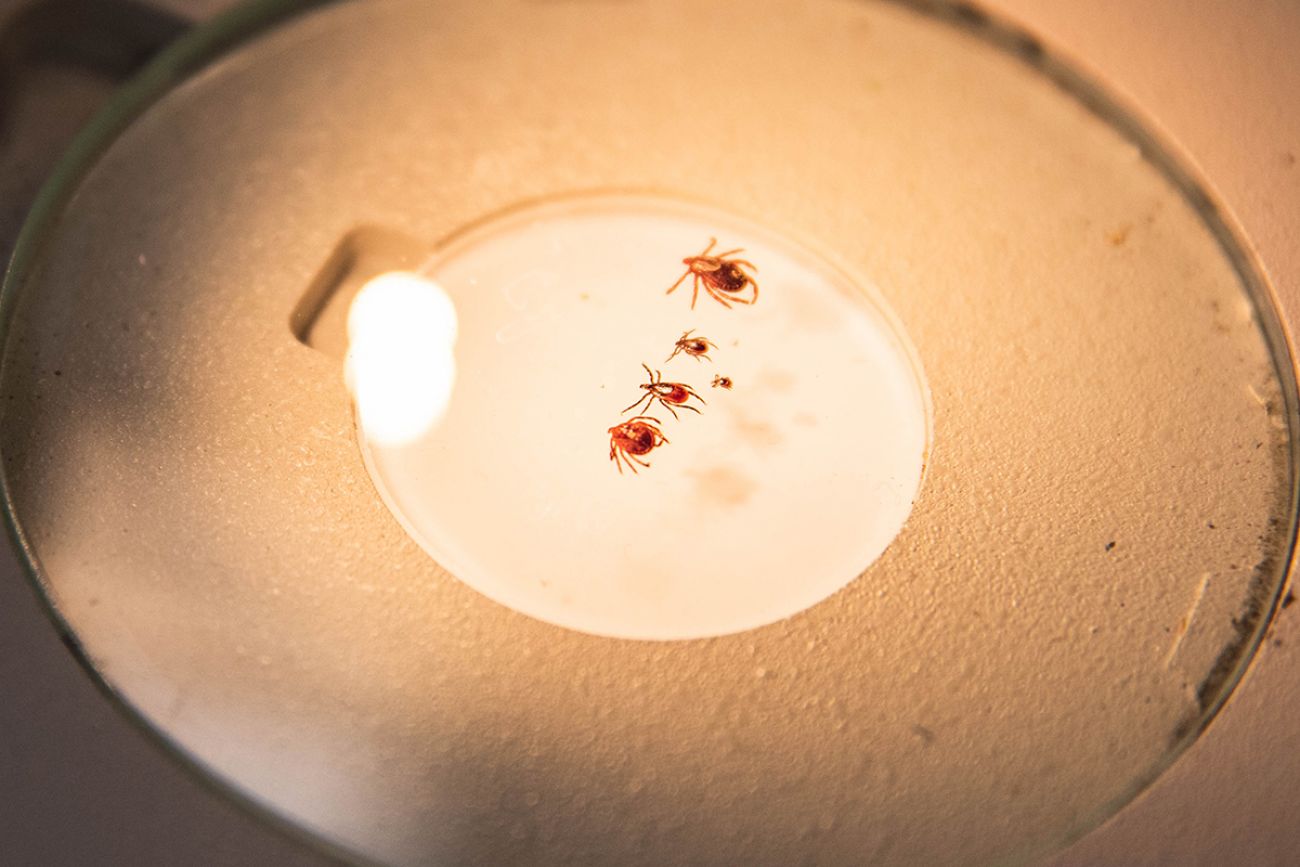Ticks on rise in Michigan, so researchers get crafty to map the tiny terrors

Ticks and the diseases they carry are becoming as much a part of a Michigan summer as walks in the woods, boats and barbecues.
Now, as cases of Lyme disease continue to increase and Ixodes scapularis — also known as black-legged or deer tick — continues its march through Michigan, researchers around the state are stepping up efforts to track the blood-sucking arachnids.
Twenty-four Michigan counties have received $9,000 each in state funding to monitor tick and mosquito populations, while mapping efforts are underway at Michigan State, Michigan Tech and Calvin universities.
Related:
- Meet the mosquito expert helping Michigan fight insect viruses
- Cool spring takes a bite out of Michigan’s mosquito season. At least for now
- Allergies are bad this year in Michigan. Climate change is making them worse
- Michigan Great Lakes: Expect lower waters, ample fish and a hot summer
- The bird flu: Clean your birdfeeder right now
- A rare butterfly makes last stand in Michigan. Feds have $57M plan to save it
- A woman, a tick, and the fight in Michigan over Lyme disease
That surveillance can help better identify “hot spots” for ticks, said Calvin’s Will Miller, an assistant biology professor and researcher who spent Monday morning at Pierce Cedar Creek Institute in Hastings, 60 miles west of Lansing.
He and others say there’s ample evidence ticks are steadily moving across the state, south from the Upper Peninsula and east from southwest Michigan.
More precise predictions are tough because surveillance efforts are fragmented, Miller said. Among other things, fluctuating animal populations confound tick counts.

In a rodent-robust summer, for example, ticks have ample hosts, meaning the pests are less likely to latch onto humans, said Jean Tsao, a professor and long-time tick researcher at Michigan State University’s fisheries and wildlife department.
“The question is ‘What really is normal?’” said Miller, whose focus is on the Amblyomma americanum, or Lone Star tick, which can carry bacteria that causes the southern tick-associated rash illness (STARI).
“We do know they are moving northward and inland,” Miller said.
The good news: Lyme disease and anaplasmosis are both treatable if caught early enough and preventable by avoiding a tick bite. (It takes 36 to 48 hours of being attached before the tick transmits the bacteria during its blood meal.)
Tick precautions
For consumers, the best defense against ticks is offense. First, avoid tick bites.
According to the Centers for Disease Control and Prevention:
- When heading into tick-risky areas (grassy, brushy, or wooded areas especially), treat boots, clothing and camping gear with products containing 0.5 percent permethrin, which remains protective through several washings.
- Walk in the center of trails. Avoid wooded and brushy areas with high grass and leaf litter.
- Check clothing, gear and pets for ticks after being outdoors.
- Do a body check, making sure to look at underarms, ears, belly buttons, backs of knees, in and around the hair, between the legs and around the waist. Shower after being outdoors.
- Tumble dry clothes in a dryer on high heat for 10 minutes to kill ticks.
- If you find a tick, submit it or a “tick pic” to the Michigan Department of Health and Human Services to have an expert help identify what kinds of ticks you find or download “The Tick App” to show you how to avoid ticks and tick-borne diseases. Find more information about emerging vector-borne illnesses here.
- For more information on ticks and disease in Michigan, visit the MDHHS webpage here.
Ticks, disease
Tracking pathogen-laden ticks begins with decidedly nontechnical steps.
Miller’s research team on Monday traipsed 150 meters along a trail at Pierce Cedar Creek Institute in Hastings, sweeping alongside with them a denim-like cloth.
Much like socks and shorts, this “tick drag” material attracts ticks as they “quest” to find a host, climbing into weeds and waving its front legs in the air, Miller said.
“They grab hold of whatever brushes up against them, hang on for dear life, then move into place where they can get their meal,” said Miller.
Dropped into ethanol alcohol, the ticks are taken back to the lab when researchers return weeks later, identified and sometimes tested for disease.
At times, the researchers also extract and “sequence” the genetic material of the microbes they carry in order to map the spread of the tick-carried pathogens.
The goal: identify “hot spots” that can guide health care and public policy, said Steve Techtmann, associate professor of biological sciences at Michigan Tech in the Upper Peninsula.
In some areas of the country, for example, researchers have determined that ticks are so thick that doctors automatically prescribe the antibiotic, doxycycline, for any tick bite as a precaution against Lyme disease.
Techtmann and other Tech researchers for the first time this year will genetically “sequence” the ticks’ microbes as part of an $18.5 million federal initiative shared by four Michigan universities to track Lyme and other emerging diseases.
At Calvin, Miller’s team uses an oat mix to lure field mice into spring-loaded, metal boxes, check them for ticks, tag them with itty-bitty ear tags, and release them back to the wild.
Call them ‘mouse houses.’
The team also is building 60 mouse houses — technically known as “double-walled insulated nest boxes” — from PVC pipes and grates and plastic funnels bought at hardware stores, Miller said.
The traps are placed upright on a tree trunk. Insulated with cotton, they lure tick-infected, white-footed mice and other rodents to take up residence, often giving birth there as well.
“They’ll preen themselves and their ectoparasites — fleas or mites or ticks — will fall to the floor and into the drain opening for us,” he said.

The ticks are trapped in small jars on the bottom of the pipes that are filled with propylene glycol that Miller and his team bought from Hobby Lobby.
Other researchers In Michigan use dry ice, leaving it in a cooler to melt to emit carbon dioxide. That mimics the exhale of breaths, luring ticks to a trap of double-sided tape.
The tick inventory is still early, but early signs show they are all over Michigan.
“What I can tell you for sure (now) is that the ticks are out. They are out where they weren’t before. And more people are going to see them for the first time while we have no way to stop them,” said MSU’s Tsao.
The inventory is necessary because ticks carry at least a half-dozen diseases in the United States, including Rocky Mountain spotted fever and ehrlichiosis. Most worrisome for Michiganders is Lyme disease, the most commonly reported vector-borne disease.

Lyme disease can be serious if not treated early, developing into joint pain, neurological problems, including meningitis, Bell’s palsy and impaired muscle movement, heart problems and severe fatigue, according to the U.S. Centers for Disease Control and Prevention.
In 2020, the latest year for which data are available, Michigan health officials reported 305 new cases of Lyme disease throughout 45 counties, up from 66 Lyme disease cases in 21 Michigan counties.
The number is likely much higher. According to a state release, Michigan actually logged 451 confirmed and probable cases in 2020, and 878 last year.
And those cases are no longer confined, as they were in 2011, to the state’s westernmost counties; rather, cases now have been identified across the bottom of Michigan and into metro Detroit, up its western edge and through much of the Upper Peninsula.
Officially, counties at risk for Lyme disease increased to 39 last year from 22 in 2014. That’s likely an undercount, though, because the pandemic interrupted monitoring efforts and made people less likely to go to hospitals for tick bites, officials said.
Another disease, anaplasmosis, the second most common tick-
borne disease in the state, also is on the climb. Cases of anaplasmosis, which without treatment can lead to organ failure and death, jumped from 17 confirmed and probable Michigan cases in 2020 to 56 in 2021, according to the state.
This year, the first “tick pic” sent to MSU’s Diagnostic Services lab for identification was of a black-legged tick.
It was pulled from the scalp of a 3-year-old child. “Fully engorged,” it was likely attached and feeding for at least five days, said entomologist Howard Russell, who reviews pictures and ticks submitted by Michiganders.
“It seems like every day I get a phone call or an email or a message” to identify another tick, Russell said.
It may seem easy to simply brush or wash away a tick and avoid disease altogether. It’s not, researchers told Bridge Michigan.
Since tick nymphs especially are tiny — the size of a poppy seed — they can easily go unnoticed, especially when they attach behind the knees or in the groin or armpits, said MSU’s Tsao.
And in Oakland County, public health staff have found nine black-legged ticks already this year, said Mark Hansell, a chief of environmental programs for the Oakland County health division.
Certainly, some of the increase may be the result of the detection efforts, acknowledged Oakland’s Hansell: “The more you look for something, the more you’ll find it.”
Still, he added: “There is enough evidence and enough people looking to know that the prevalence of the black-legged tick is increasing.”
See what new members are saying about why they donated to Bridge Michigan:
- “In order for this information to be accurate and unbiased it must be underwritten by its readers, not by special interests.” - Larry S.
- “Not many other media sources report on the topics Bridge does.” - Susan B.
- “Your journalism is outstanding and rare these days.” - Mark S.
If you want to ensure the future of nonpartisan, nonprofit Michigan journalism, please become a member today. You, too, will be asked why you donated and maybe we'll feature your quote next time!





